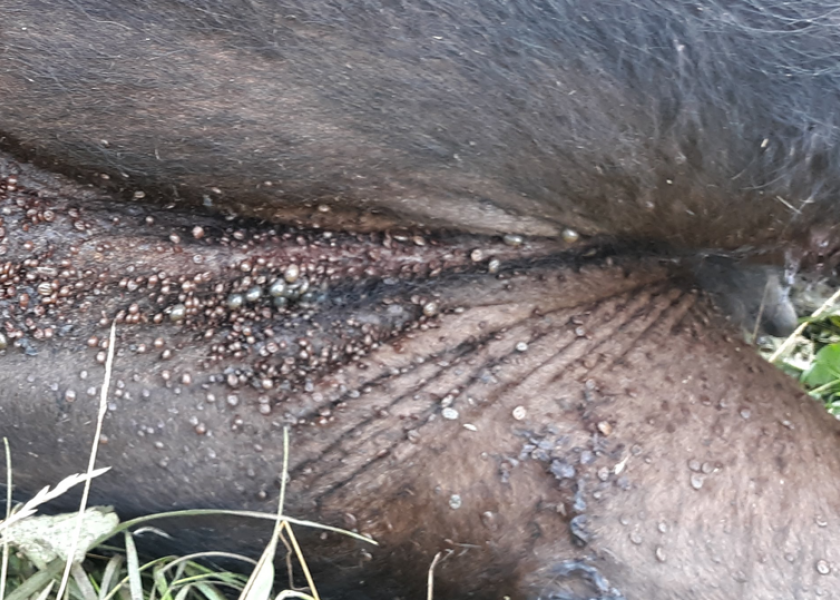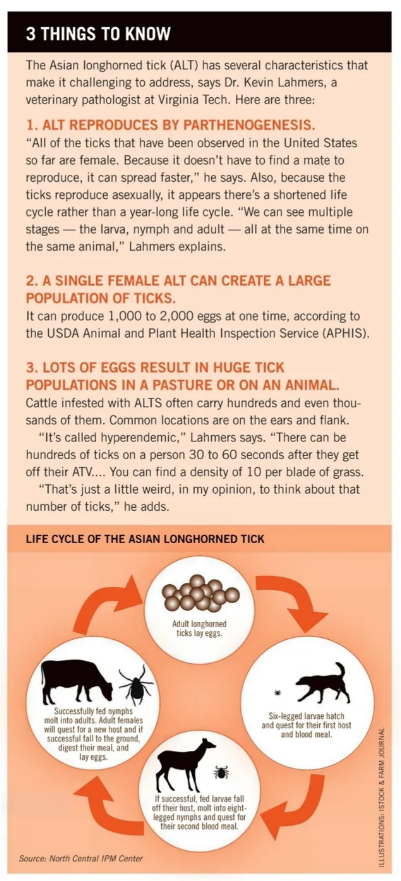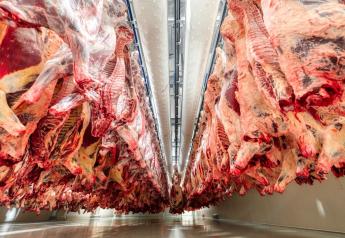Look for Asian Longhorned Ticks and other Tick Species this Summer

‘Holy smokes!’ Those two words struck a chord in me when I spoke with Joe Deal one afternoon earlier this year.
I had called Joe to see if he would share photos I’d found online that he had taken of Asian longhorned ticks (ALT) on a dead cow.
I’d never seen a tick infestation on any animal that was this bad, and it made my skin crawl.
“Where did you find that cow?” I asked him.
Joe, an Extension livestock specialist in Macon County, N.C., said a beef producer he works with had bought the cow at a local sale in June 2020.
He brought her home and put her out on pasture. Two weeks later she was dead, despite his efforts to save her with an antiparasitic drug.
The producer then called Joe to come out and have a look.
“I was like, ‘holy smokes,’” Joe said. “There must have been several thousand ticks on that cow.”
As you can see in the photo, there were hundreds of ALTs on the cow’s hind quarters alone.
That’s important to know, because a heavy tick load and its location on an animal are often tell-tale signs that what you’re seeing are ALTs and not dog ticks or some other tick species.
The ALT infestation level on this particular animal is concerning, so should we be alarmed?
Probably not, says Dr. Fred Gingrich, executive director of the American Association of Bovine Practitioners. But Gingrich says veterinarians and producers need to be aware of ALT.
Joe Deal told me he hasn’t seen any Asian longhorned ticks since he photographed the ones shown here.

The other thing is this tick infests cattle of all ages, and calves are especially vulnerable. If you see a lot of ticks on calves, consider whether what you’ve found is the ALT.
Gingrich advises if you do find ALT, report it to your state veterinarian. State departments of agriculture are trying to keep a handle on where the tick is and where it’s likely headed.








